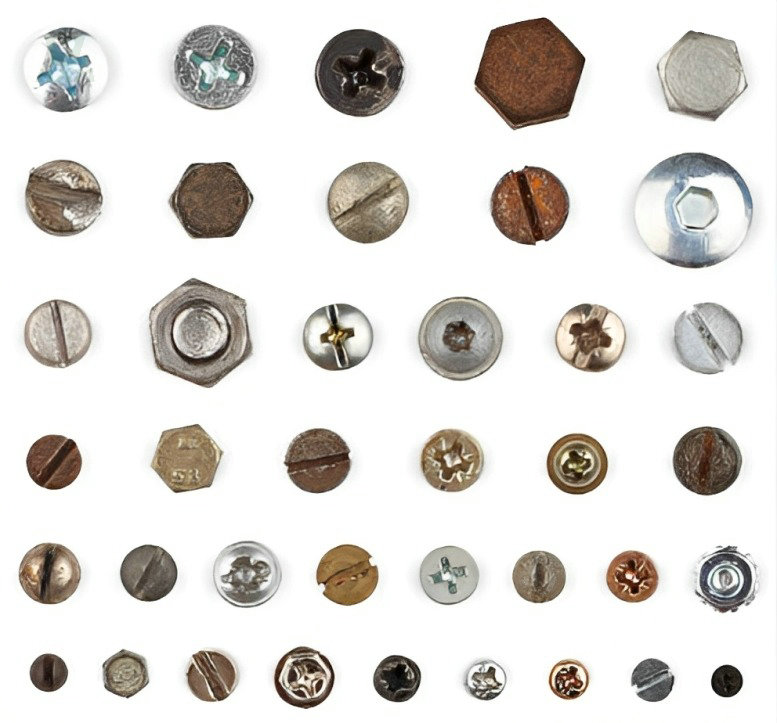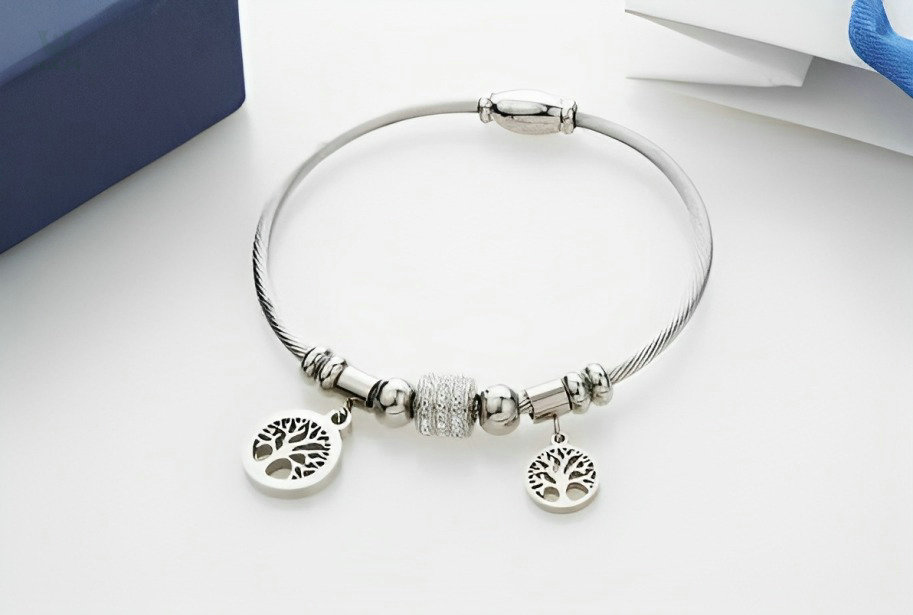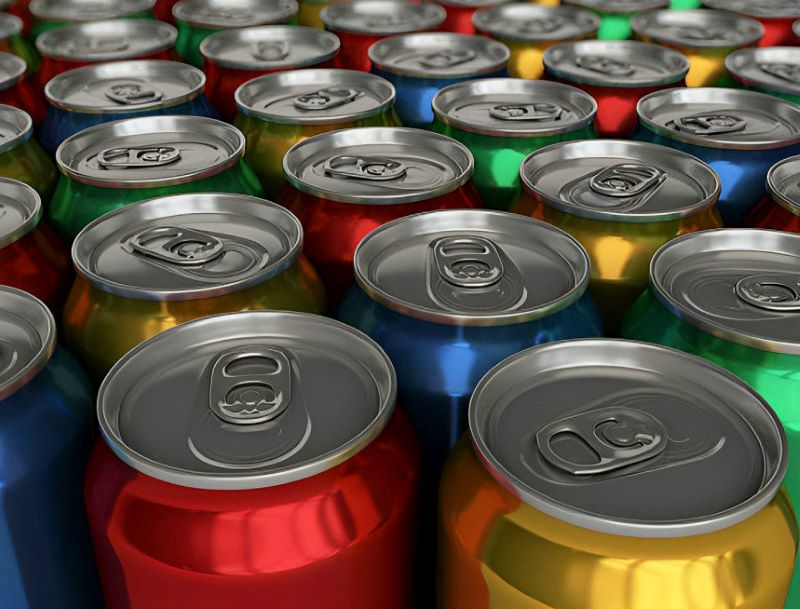– alloy supplier
As a dedicated alloy supplier, I am no stranger to the enchanting world of metallurgy. The allure of alloys lies in their exceptional properties, making them indispensable in various industries. However, amid the shimmering brilliance of these versatile materials, a question often lingers in the minds of engineers and enthusiasts alike – do alloys tarnish?
Do Alloys Tarnish?
Yes, alloys can tarnish, but the extent and rate of tarnishing depend on the specific composition of the alloy and the environmental conditions to which it is exposed. Tarnishing is a form of corrosion that occurs when metals react with certain elements in the surrounding environment.
In this comprehensive article, we will delve into the factors that influence the tarnishing potential of different alloys, the role of environmental conditions, and the importance of alloy composition. Join me as we navigate the science behind corrosion, oxidation, and the fascinating interplay of elements that shape the tarnishing behavior of alloys.
Whether you are a seasoned materials scientist seeking deeper insights or a curious reader intrigued by the magic of metallurgy, this article promises to enlighten and captivate.
What is tarnishing?
Tarnishing is a form of corrosion that occurs when metals, including alloys, react with substances in their surrounding environment. Corrosion is a natural electrochemical process that leads to the deterioration of metals, resulting in a change in their surface appearance and properties.

When metals are exposed to moisture, oxygen, and other atmospheric elements, they can undergo chemical reactions, leading to the formation of new compounds on their surface. In the case of tarnishing, the metal reacts with gases, liquids, or salts in the environment, resulting in the formation of tarnish products such as oxides, sulfides, or chlorides.
For example, in copper-based alloys like brass and bronze, the metal reacts with atmospheric oxygen and moisture to form copper oxide, which manifests as the greenish patina commonly associated with tarnishing.
Understanding tarnishing as a form of corrosion is essential for protecting and preserving the appearance and functionality of alloys. By implementing preventive measures and proper maintenance from alloy supplier, alloy users can mitigate tarnishing effects and extend the longevity of these valuable materials.
Factors influencing tarnishing in alloys
The process of tarnishing is influenced by various factors, such as temperature, humidity, pollutants, and the composition of the alloy. Alloys containing certain elements, like copper or silver, are more prone to tarnishing than others.
The composition of the alloy has a significant impact on its susceptibility to tarnishing. As an alloy supplier, understanding the influence of alloy composition on tarnishing is vital in recommending the most appropriate materials to customers based on their specific needs and environmental conditions.
Alloys are combinations of multiple elements, each contributing unique properties to the material. Certain metals in the alloy, such as copper, silver, or iron, are more prone to oxidation and corrosion, making the alloy more susceptible to tarnishing. When these metals react with environmental elements like oxygen and moisture, they form tarnish products such as oxides or sulfides on the alloy’s surface.
On the other hand, alloys with high levels of corrosion-resistant elements like chromium, aluminum, or nickel exhibit enhanced tarnish resistance. For instance, stainless steel, which contains chromium forming a protective chromium oxide layer, exhibits excellent corrosion resistance and reduced tarnishing.
As an alloy supplier, recommending alloys with appropriate compositions can help customers mitigate tarnishing effects in their applications. Factors such as the intended use, environmental conditions, and maintenance requirements should be considered to ensure the longevity and performance of the alloy in various settings. Providing alloys with tailored compositions and protective coatings can offer customers tarnish-resistant solutions that meet their specific requirements.
Environmental conditions play a crucial role in influencing the tarnishing behavior of alloys. Tarnishing is a surface reaction that occurs when metals in the alloy interact with elements in the surrounding environment. Different environmental factors can accelerate or decelerate the tarnishing process, impacting the appearance and performance of the alloy.
Humidity: High humidity levels create a moist environment that promotes the formation of corrosion products on the alloy’s surface. Moisture facilitates the migration of ions and accelerates chemical reactions, leading to faster tarnishing.
Temperature: Elevated temperatures can expedite the corrosion process, including tarnishing. Higher temperatures increase the rate of chemical reactions, which can result in the formation of tarnish products more rapidly.
Pollutants: Pollutants in the air, such as sulfur compounds or chlorides, can act as catalysts for corrosion and tarnishing. These contaminants can react with the alloy’s surface and exacerbate tarnishing effects, especially in industrial or urban environments.
Exposure Duration: The duration of exposure to environmental elements also impacts tarnishing. Prolonged exposure to high humidity, pollutants, or corrosive agents increases the likelihood of tarnishing over time.
Managing environmental conditions is essential in minimizing tarnishing effects on alloys. Proper storage, maintenance, and protective measures, such as coatings or surface treatments, can help shield the alloy from harmful environmental elements. As an alloy supplier, understanding the influence of environmental factors on tarnishing can guide customers in selecting the most suitable materials for their applications, ensuring the longevity and reliability of their alloy-based products.
The presence of protective layers is a critical factor in mitigating tarnishing in alloys. These layers act as barriers, shielding the underlying alloy from interacting with the surrounding environment and preventing the formation of tarnish products.
Passive Oxide Layers: Some alloys, like stainless steel, contain corrosion-resistant elements such as chromium, which form a passive oxide layer on the surface when exposed to oxygen. This oxide layer, known as chromium oxide, acts as a protective barrier against further oxidation and corrosion, effectively reducing tarnishing effects.
Anodizing: Anodizing is an electrochemical process used to create a protective oxide layer on the surface of certain alloys, such as aluminum. The anodized layer enhances the alloy’s resistance to tarnishing and corrosion, making it more suitable for applications in harsh environmental conditions.
Plating: Coating the alloy with a layer of another metal, such as zinc or nickel, can provide an added protective shield against tarnishing. Plating creates a sacrificial layer that corrodes before the underlying alloy, safeguarding it from tarnish-inducing elements.
Protective Coatings: Applying specialized protective coatings, such as polymer coatings or lacquers, can effectively prevent the alloy from coming into direct contact with the environment. These coatings act as a barrier, hindering the ingress of moisture, oxygen, and other tarnish-inducing agents.
As an alloy supplier, understanding the significance of protective layers empowers you to recommend tarnish-resistant materials to customers based on their specific requirements and environmental conditions. Providing alloys with appropriate protective measures ensures that your customers’ products maintain their appearance and functionality over extended periods, making your alloys a reliable and preferred choice in various applications.
Tarnishing in Specific Alloys
Alloys prone to tarnishing
Certain alloys are more prone to tarnishing due to their composition and reactivity with environmental elements. Alloys containing metals like copper, silver, or iron are particularly susceptible to tarnishing. Here are some examples of alloys that are prone to tarnishing:
A copper-zinc alloy, brass is widely used for its malleability and attractive golden appearance. However, it tends to tarnish over time, forming a characteristic dark brown or greenish patina on its surface.
Composed mainly of copper with tin as an alloying element, bronze is renowned for its historical significance and artistic applications. Like brass, bronze is prone to tarnishing, and its patina can vary from brown to green hues.
An alloy of silver containing 92.5% silver and 7.5% other metals (usually copper), sterling silver is prized for its lustrous shine. However, it readily tarnishes when exposed to air and moisture, turning black or dark gray.
Despite its name, nickel silver contains no silver; it is a copper-nickel-zinc alloy. Nickel silver tarnishes similarly to brass, developing a darker patina with time.
An alloy of gold with other white metals, such as nickel or palladium, white gold can tarnish over time, especially if it contains nickel. Rhodium plating is commonly applied to prevent tarnishing and maintain its bright white appearance.
To address tarnishing in these alloys, proper storage, regular cleaning, and the application of protective coatings or plating can help preserve their appearance and performance. As an alloy supplier, offering tarnish-resistant alternatives or guiding customers in maintaining these alloys can enhance their overall satisfaction and ensure the longevity of their products.
Alloys less tendency to tarnish
Alloys with high corrosion resistance exhibit less tendency to tarnish, making them ideal choices for applications where maintaining a pristine appearance is crucial. Two prominent examples of such alloys are aluminum alloys and certain stainless steel grades:
Aluminum alloys are renowned for their exceptional corrosion resistance, attributed to the formation of a protective oxide layer on their surface when exposed to air. This oxide layer acts as a barrier, preventing further interaction of the metal with the environment and reducing the risk of tarnishing. Aluminum alloys find extensive use in various industries, including aerospace, automotive, and construction, where their resistance to tarnishing ensures lasting aesthetics and performance.
Stainless steel, a versatile alloy composed of iron, chromium, and other elements, boasts remarkable corrosion resistance and reduced susceptibility to tarnishing. The presence of chromium in stainless steel enables the formation of a passive chromium oxide layer, which safeguards the alloy from oxidation and corrosion. Certain stainless steel grades, such as austenitic stainless steel (e.g., 304 and 316), are particularly renowned for their tarnish resistance, making them popular choices in applications involving exposure to harsh environmental conditions, such as marine environments and medical equipment.
As an alloy supplier, offering aluminum alloys and tarnish-resistant stainless steel grades allows customers to select materials that uphold their appearance and structural integrity over time. These alloys are valued for their ability to maintain a pristine surface, reducing the need for frequent maintenance and ensuring a long-lasting, aesthetically pleasing finish in diverse industrial and architectural applications.
Mechanisms of Tarnishing
Oxidation and Formation of Oxide Layers
Oxidation and the formation of oxide layers are fundamental mechanisms behind the tarnishing of alloys. When metals in the alloy come into contact with oxygen in the air, they undergo a chemical reaction known as oxidation. This process leads to the creation of oxide layers on the alloy’s surface.
For example, metals like iron, copper, and aluminum are prone to oxidation. When iron reacts with oxygen, it forms iron oxide, commonly known as rust. Copper, on the other hand, reacts with oxygen to produce copper oxide. Aluminum alloys form a protective oxide layer of aluminum oxide when exposed to air, which helps resist further corrosion.
The oxide layers that form as a result of oxidation can alter the appearance of the alloy, causing discoloration or a change in luster. These tarnish products may be visually unappealing, and in some cases, they can compromise the performance or functionality of the alloy.
Managing oxidation is essential for alloy supplier and users in preventing tarnishing and preserving the alloy’s integrity. Applying protective coatings, such as paint or plating, can shield the alloy from direct contact with oxygen and moisture, reducing the likelihood of oxidation and tarnishing. Understanding the role of oxidation in tarnishing enables alloy users to make informed decisions in selecting suitable materials and protective measures to ensure the long-lasting beauty and functionality of their alloy-based products.
Formation of Patina on Copper-based Alloys
The formation of patina is a distinctive process observed in copper-based alloys, such as brass and bronze, as they undergo tarnishing. Patina is a thin, protective layer that develops on the alloy’s surface due to the interaction of copper with elements in the surrounding environment.
As copper-based alloys tarnish, they react with atmospheric elements like oxygen, moisture, and sulfur-containing compounds. This reaction leads to the formation of various compounds, including copper oxides and sulfides, on the alloy’s surface. Initially, the patina may appear as a bright or dark brown layer, but over time, it can progress to hues of green or blue-green.
The patina not only alters the appearance of the alloy, giving it an aged and weathered look, but also acts as a protective barrier against further corrosion. This layer serves as a shield, preventing deeper penetration of corrosive agents and slowing down the tarnishing process. For this reason, patina is often appreciated for its artistic and historical significance in artworks and architectural elements made from copper-based alloys.
While patina adds character and charm to the alloy, its formation can be managed to achieve desired aesthetics. Some applications may seek to accelerate patina formation for decorative purposes, while others may employ protective coatings to slow down or prevent it. Understanding the development of patina allows alloy users to utilize its unique properties to enhance the appeal and durability of their copper-based alloy products.
Environmental Factors in Accelerating Tarnishing
Environmental factors play a pivotal role in accelerating the tarnishing process of alloys. These external conditions can significantly impact the rate at which metals react with elements in the surrounding environment, leading to the formation of tarnish products on the alloy’s surface.
- Humidity: High humidity levels provide an ideal environment for tarnishing. Moisture in the air facilitates the migration of ions, allowing for faster chemical reactions between the alloy and environmental elements. The presence of water vapor accelerates the oxidation of metals, leading to the formation of oxide layers and other tarnish products.
- Temperature: Elevated temperatures can expedite tarnishing by increasing the rate of chemical reactions. Higher temperatures provide more energy for the atoms and molecules to interact, leading to faster corrosion processes. Warm and humid conditions often create the perfect setting for accelerated tarnishing.
- Pollutants: Air pollutants, such as sulfur-containing compounds and chlorides, can act as catalysts for tarnishing. These contaminants initiate or speed up chemical reactions on the alloy’s surface, enhancing the formation of tarnish products.
- Exposure Duration: The length of time the alloy is exposed to the environment also plays a role in tarnishing. Prolonged exposure to high humidity, pollutants, or corrosive agents increases the likelihood of tarnishing over time.
Understanding the role of environmental factors in tarnishing enables alloy users to implement preventive measures. Proper storage, protective coatings, and controlled environmental conditions can help minimize tarnishing effects, preserving the alloy’s appearance and performance. As an alloy supplier, providing guidance on managing environmental exposure can assist customers in choosing the most suitable materials for their applications, ensuring the long-term durability and aesthetics of their alloy-based products.
how to Mitigate and Prevent of Alloy Tarnish
Proper Alloy Selection based on Environmental Conditions
As an alloy supplier, recommending the appropriate alloy composition based on the specific environmental conditions of the application is vital in mitigating tarnishing effects. Opting for alloys with high corrosion resistance, such as aluminum alloys or certain stainless steel grades, can reduce the risk of tarnishing in environments with high humidity or exposure to pollutants. Understanding the alloy’s performance characteristics in different settings empowers customers to make informed decisions, ensuring their chosen alloys remain tarnish-resistant and durable.
Surface Treatments and Coatings to Protect against Tarnishing
Applying protective surface treatments and coatings is an effective strategy in preventing tarnishing. Plating the alloy with metals like zinc or nickel provides sacrificial layers that corrode in place of the underlying alloy, safeguarding it from tarnish-inducing agents. Anodizing aluminum forms a protective oxide layer, enhancing tarnish resistance. Additionally, alloy supplier can offer alloy tarnish-resistant coatings or surface treatments, imparting added protection and prolonging the alloy’s aesthetic appeal and performance.
Conclusion
Alloy tarnishing is a natural process wherein metals in the alloy react with elements in the environment, leading to the formation of tarnish products such as oxides and patina. Certain alloys, particularly those containing copper, silver, or iron, are more prone to tarnishing. Environmental factors, including humidity, temperature, and pollutants, play a significant role in accelerating tarnishing. However, tarnishing can be managed and prevented through proper alloy selection, surface treatments, and maintenance practices.
As an alloy supplier, understanding and managing tarnishing are critical in offering high-quality products to customers. Tarnishing can compromise the performance, aesthetics, and longevity of alloys, impacting their value in various applications. By providing tarnish-resistant alloys and offering guidance on preventive measures, alloy supplier enable customers to achieve optimal performance and aesthetics, ensuring customer satisfaction and loyalty.
Knowledge of alloy behavior, including tarnishing mechanisms, composition influence, and environmental factors, is paramount for alloy supplier and users alike. Armed with this understanding, customers can make informed decisions in selecting alloys that best suit their specific needs and environmental conditions. Alloy supplier, in turn, play a vital role in ensuring customer success by offering tailored solutions and maintaining the highest quality standards in their products.
In conclusion, alloy tarnishing is a natural occurrence that can be effectively managed and prevented through appropriate alloy selection, surface treatments, and maintenance practices. By prioritizing tarnish resistance and providing comprehensive support to customers, alloy supplier play a pivotal role in enhancing alloy performance, aesthetics, and overall customer satisfaction. Understanding and leveraging alloy behavior is integral to delivering exceptional products and driving innovation in diverse industries and applications.







